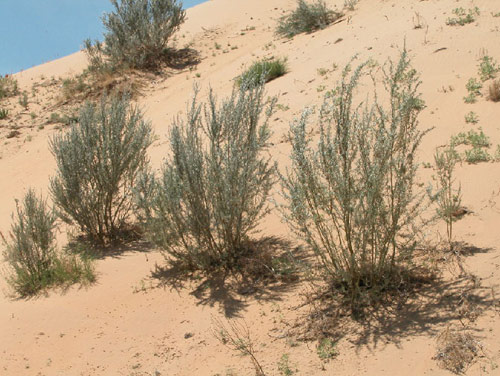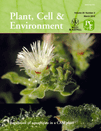导读:中科院微生物所夏桂先研究组利用酵母筛选体系从碱蓬中分离了一个耐逆相关新基因SsOEP8,该基因编码叶绿体外膜蛋白,和植物对氧化胁迫的耐受性紧密相关。

盐碱、干旱、极端温度等非生物胁迫是严重影响植物生长和发育造成农作物减产的主要原因,所有这些胁迫都会引发细胞内活性氧(Reactive Oxygen Species,ROS)的大量积累从而给植物带来次级氧化胁迫。碱蓬是一种能耐受高盐、叶肉质化的真盐生植物,具有高度的耐逆能力。从碱蓬中分离耐逆相关基因、分析其细胞内功能和调控途径,对于揭示极端生境植物的耐逆机制以及耐逆植物基因工程都具有重要意义。
最近,微生物所夏桂先研究组利用酵母筛选体系从碱蓬中分离了一个耐逆相关新基因SsOEP8,该基因编码叶绿体外膜蛋白,和植物对氧化胁迫的耐受性紧密相关。研究表明,SsOEP8基因的表达受H2O2、NaCl等多种非生物胁迫诱导,其中受H2O2诱导最为明显;在烟草BY-2细胞和拟南芥植株中表达SsOEP8能显著提高转基因细胞或烟草的抗氧化胁迫能力。进一步研究发现在拟南芥中异位表达SsOEP8可引起叶绿体向叶肉细胞边缘聚集,同时叶绿体运动相关蛋白的表达受到抑制,包括AtCHUP1(参与由微丝细胞骨架介导的叶绿体定位)等。在烟草BY-2细胞中异位表达SsOEP8基因可以引起微丝骨架的结构变化。这些研究结果表明:SsOEP8可以通过改变依赖于微丝骨架的叶绿体的分布,抑制叶绿体中ROS的产生,从而增强对氧化胁迫的耐受性。该研究的创新性之一在于首次发现叶绿体包膜蛋白与植物的抗氧化胁迫相关,其研究结果已于2012年3月在Plant, Cell & Environment杂志发表。

 Heterologous expression of a chloroplast outer envelope protein from Suaeda salsa confers oxidative stress tolerance and induces chloroplast aggregation in transgenic Arabidopsis plants
Heterologous expression of a chloroplast outer envelope protein from Suaeda salsa confers oxidative stress tolerance and induces chloroplast aggregation in transgenic Arabidopsis plants
FANG WANG, CHUN-LIN YANG, LI-LI WANG, NAI-QIN ZHONG, XIAO-MIN WU, LI-BO HAN, GUI-XIAN XIA
Suaeda salsa is a euhalophytic plant that is tolerant to coastal seawater salinity. In this study, we cloned a cDNA encoding an 8.4 kDa chloroplast outer envelope protein (designated as SsOEP8) from S. salsa and characterized its cellular function. Steady-state transcript levels of SsOEP8 in S. salsa were up-regulated in response to oxidative stress. Consistently, ectopic expression of SsOEP8 conferred enhanced oxidative stress tolerance in transgenic Bright Yellow 2 (BY-2) cells and Arabidopsis, in which H2O2 content was reduced significantly in leaf cells. Further studies revealed that chloroplasts aggregated to the sides of mesophyll cells in transgenic Arabidopsis leaves, and this event was accompanied by inhibited expression of genes encoding proteins for chloroplast movements such as AtCHUP1, a protein involved in actin-based chloroplast positioning and movement. Moreover, organization of actin cytoskeleton was found to be altered in transgenic BY-2 cells. Together, these results suggest that SsOEP8 may play a critical role in oxidative stress tolerance by changing actin cytoskeleton-dependent chloroplast distribution, which may consequently lead to the suppressed production of reactive oxygen species (ROS) in chloroplasts. One significantly novel aspect of this study is the finding that the small chloroplast envelope protein is involved in oxidative stress tolerance.
文献链接:https://onlinelibrary.wiley.com/doi/10.1111/j.1365-3040.2011.02438.x/abstract







